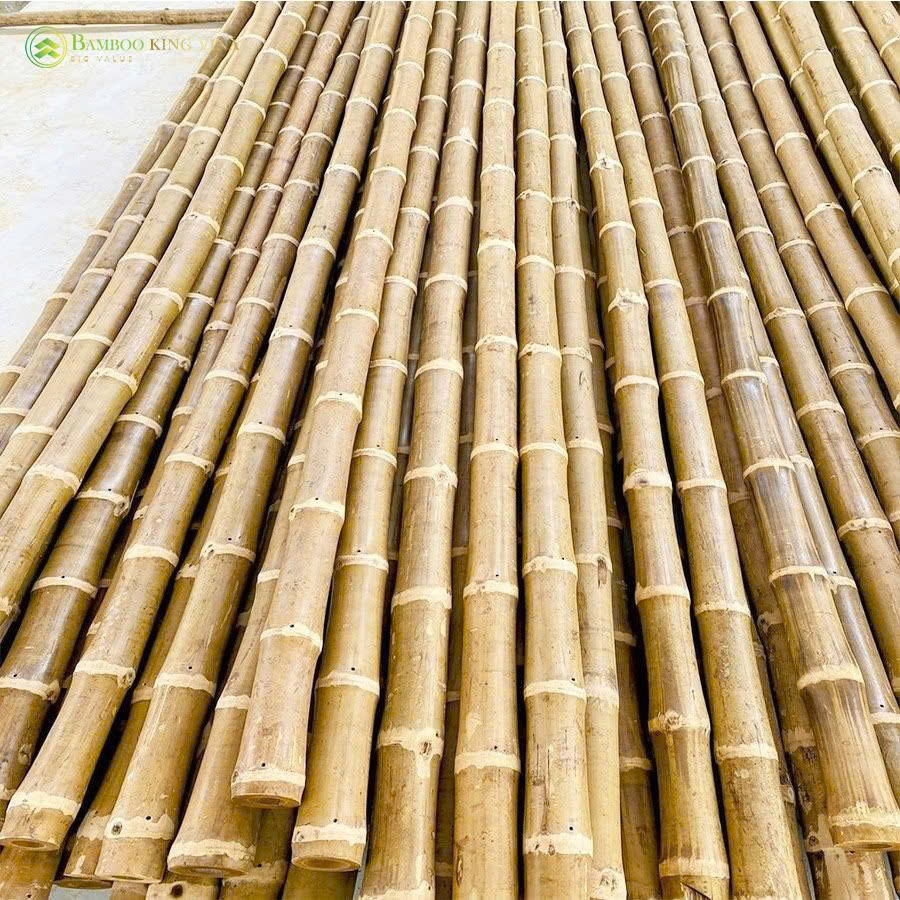Introduction
Thermally-treated bamboo has emerged as a premium material for interior design and architectural applications. Known for its strength, eco-friendliness, and refined aesthetics, this bamboo variant is now increasingly sourced from Vietnam—where advanced treatment methods and sustainable production practices are setting new standards. For U.S. interior businesses seeking responsible material choices that also perform, Vietnamese thermally-treated bamboo offers an optimal blend of form, function, and environmental benefit.
What Is Thermally-Treated Bamboo?
Thermally-treated bamboo is bamboo that has undergone high-temperature processing—typically between 180–220°C—to improve its durability, moisture resistance, and structural stability. The heat treatment process alters the bamboo’s cellulose and lignin composition, eliminating sugars that attract pests and significantly reducing water absorption. The result is a dense, rich-toned material suitable for high-performance interior use.
Why Interior Businesses Prefer Thermally-Treated Bamboo
- Enhanced Durability: Treated bamboo resists swelling, warping, and cracking under fluctuating humidity and temperature—ideal for American residential and commercial interiors.
- Natural Aesthetic Appeal: The thermal process deepens bamboo’s color naturally, producing tones from golden brown to walnut-like richness without the use of stains.
- Sustainability Benefits: Bamboo matures in just 3–5 years and regenerates from its root system. With no need for replanting, it’s one of the most renewable raw materials on earth.
- Low Maintenance: Thanks to its moisture resistance and hardness, thermally-treated bamboo requires minimal upkeep compared to untreated wood or synthetic alternatives.
Applications in U.S. Interior Projects
Thermally-treated bamboo is used across a wide range of interior components:
- Flooring and wall cladding
- Ceiling panels
- Cabinetry and furniture panels
- Decorative elements in hospitality, retail, and residential settings
Its warm tones and clean finish align well with modern, rustic, or eco-luxury aesthetics, giving interior designers flexibility across styles.
Comparison with Traditional Materials
Compared to hardwoods like oak or walnut, thermally-treated bamboo offers:
- Faster replenishment cycles
- Comparable strength-to-weight ratio
- Better moisture resistance post-treatment
- Lower carbon footprint throughout its lifecycle
When measured against synthetic or laminate surfaces, bamboo adds authenticity, recyclability, and the benefit of being VOC-free in its treated form.
Thermal Treatment Technology in Vietnam
Vietnamese factories employ industrial-grade kilns and controlled steam environments to ensure uniform heating and consistent quality across bamboo panels or boards. The process is chemical-free and aligned with sustainability goals, relying solely on heat and pressure.
Manufacturers apply strict quality control measures, including moisture content testing, tensile and compression strength testing, and surface inspection. The result is a high-quality product that meets the expectations of U.S. designers and project developers.
Why Work with Bamboo King Vina?
Vietnam is home to a number of capable bamboo manufacturers, but Bamboo King Vina distinguishes itself with an unmatched combination of scale, precision, and sustainability. Here’s why BKV is a trusted choice for interior-focused businesses:
1. Scalable Production & Fast Turnaround
With 11 dedicated workshops and a 75,000m² manufacturing footprint, BKV fulfills high-volume orders while maintaining consistent lead times.
2. Precision Thermal Treatment
BKV utilizes calibrated thermal chambers and hot-pressing lines to ensure bamboo panels meet durability standards required by international markets.
3. Customization at Scale
Whether your project calls for a specific tone, surface finish, or profile, BKV provides OEM solutions tailored to U.S. market expectations.
4. Environmental Commitment
Bamboo King Vina sources bamboo from responsibly managed plantations and uses low-emission adhesives, supporting green certifications like LEED and WELL.
Conclusion
Thermally-treated bamboo from Vietnam represents a convergence of sustainability, performance, and design flexibility. As demand rises for materials that balance ecological responsibility with technical excellence, this innovative bamboo solution offers U.S. interior businesses a durable, attractive, and future-ready choice. With trusted partners like Bamboo King Vina, sourcing premium bamboo products for large-scale or boutique projects has never been easier—or greener.










